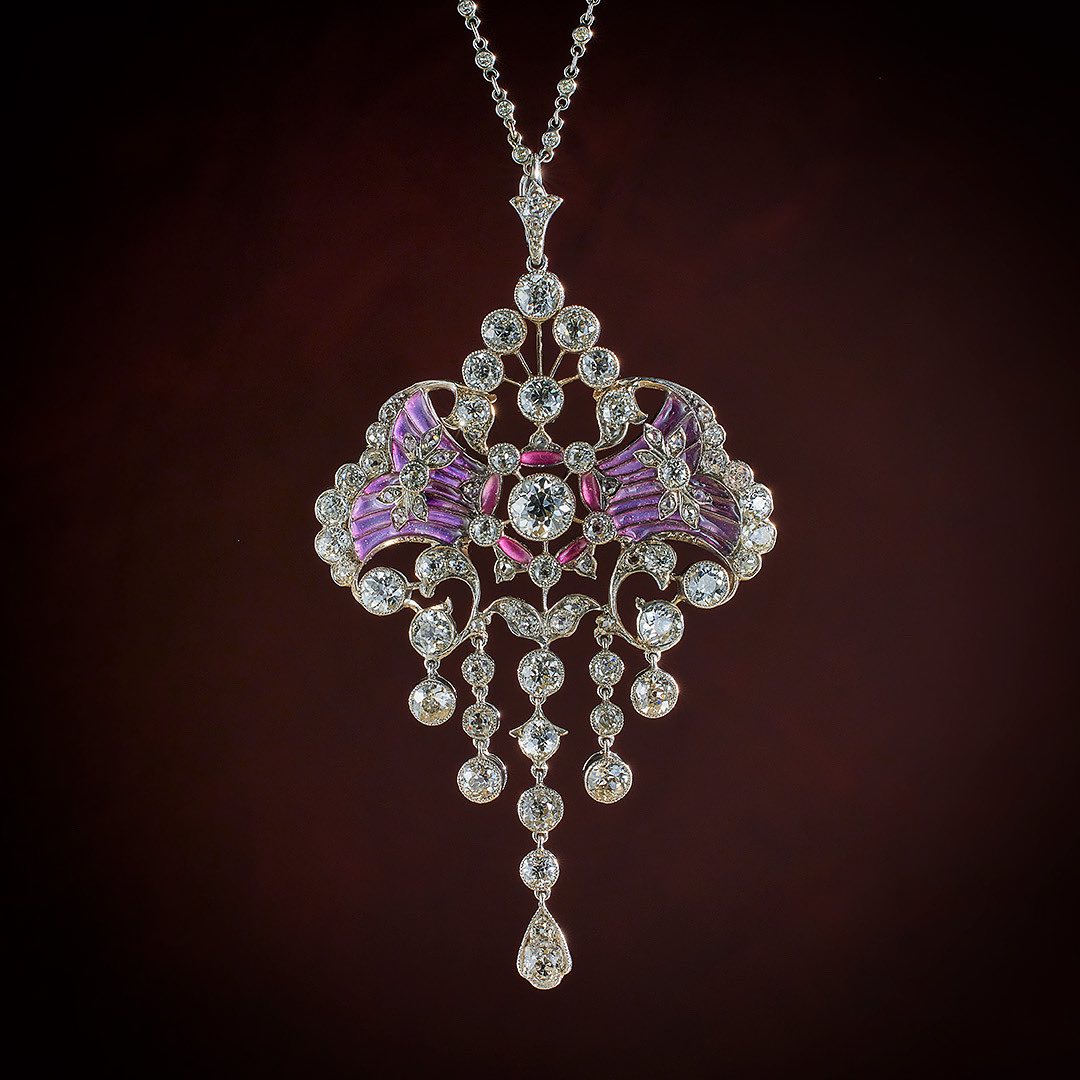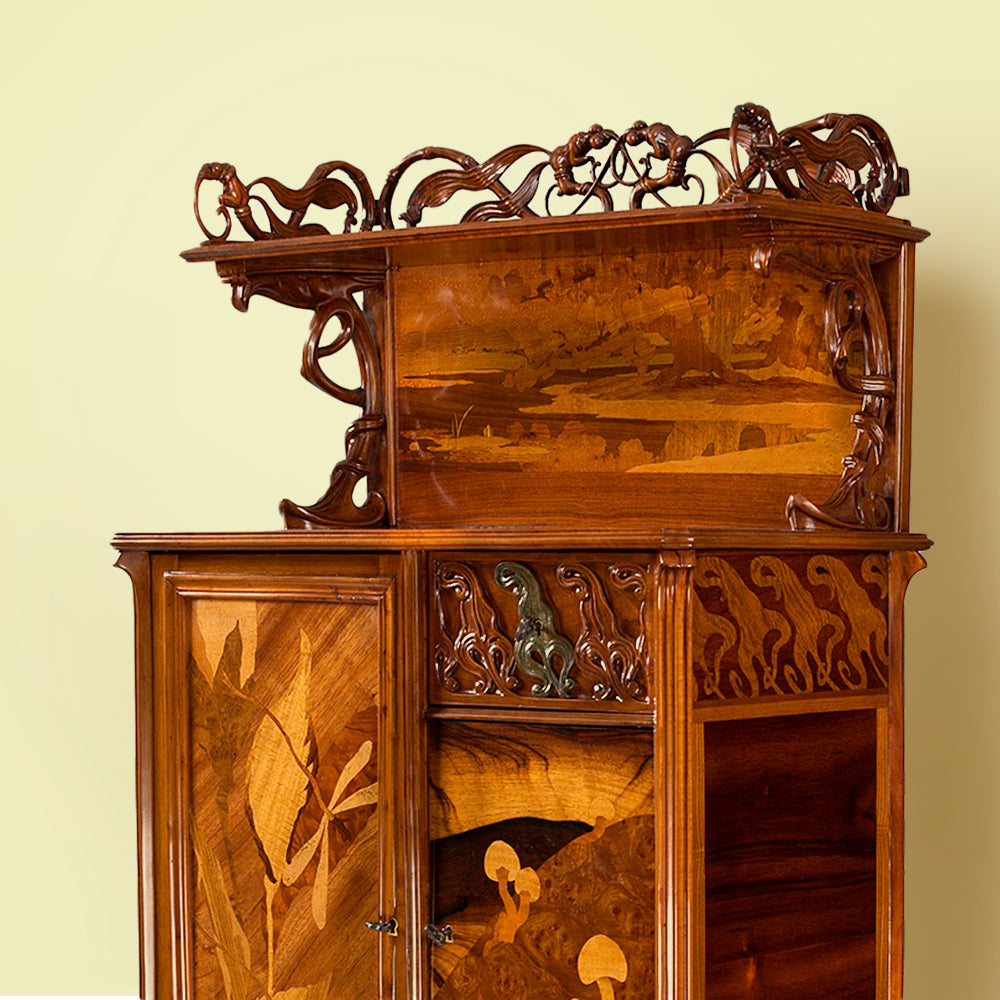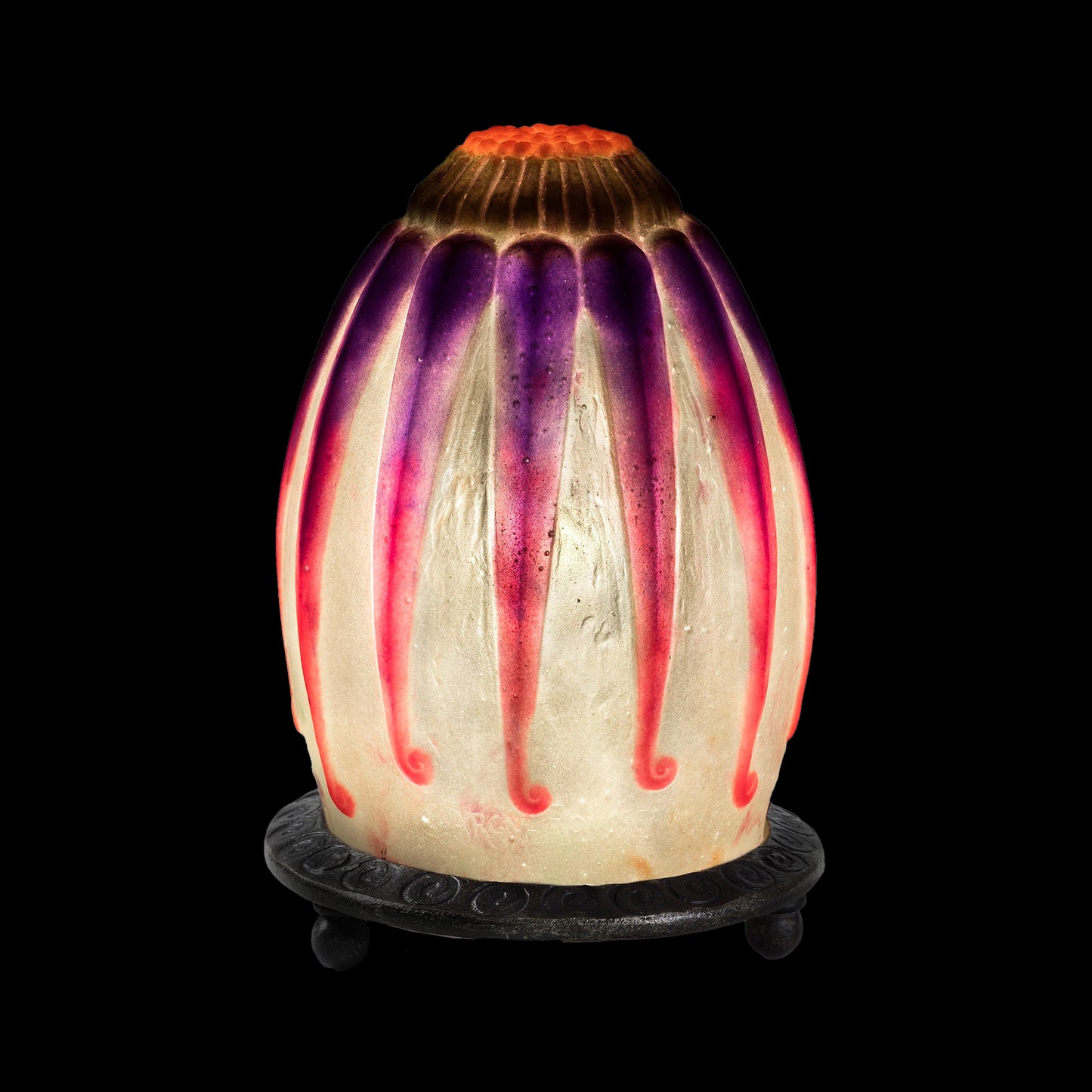
The lacy, ethereal platinum, diamond and pearl jewelry of the late 19th and early 20th centuries goes by a number of names. The French call the style “Belle Epoque”, while in England and America it is termed “Edwardian” after the popular, jewelry-loving English king. Given impetus by the collaboration of Louis Cartier and the House of Worth, it was internationally known as the “Garland Style”. This name evokes these jewels’ characteristic look - radiant diamonds and satiny pearls set almost invisibly into delicate, flexible forms referencing floral and foliate motifs drawn from traditional textile arts and architectural ornament.
Yet for all its delicacy and stylized naturalism, the Garland Style owes its flowering to scientific breakthroughs that unlocked the power of platinum, a metal that had withheld its secrets from European jewelers for centuries. By the 1870s, armed with new technology, jewelers discovered that platinum-topped gold could replace silver to create diamond jewels with a sublime lightness and radiance.
 Left: Examples of the “distorted little cubes” of platinum placer grains that the Spanish called “platina”, Right: Edwardian Diamond and Plique-à-jour Enamel Pendant Necklace
Left: Examples of the “distorted little cubes” of platinum placer grains that the Spanish called “platina”, Right: Edwardian Diamond and Plique-à-jour Enamel Pendant Necklace

Left: Diamond and Pearl Lavalier Necklace, Middle: Tiffany & Co. Crescent Brooch, Right: Diamond and Onyx Poppy Pendant Brooch
Led by the French, they strove to work in platinum alone, and the effects were thrilling. Platinum can be reduced to great thinness without losing strength of form. It cannot be engraved, but it can be cut out, sawn, rolled, compacted, dented, and pushed aside in order to be shaped, to remove weight, and to create surface patterning. Further, jewelers broke up hard edges with “millegraining”, making tiny beads with a knurling tool to obscure the hard lines of the mount with diffuse luster. Platinum can convince the eye that it isn’t even there.
 Left: One of the greatest-of-all-time collectors, the American heiress Grace Wilson Vanderbilt, embraced this revolutionary jewelry and helped spark demand, Right: Belle Époque Natural Pearl Drop and Diamond Lavalier Necklace
Left: One of the greatest-of-all-time collectors, the American heiress Grace Wilson Vanderbilt, embraced this revolutionary jewelry and helped spark demand, Right: Belle Époque Natural Pearl Drop and Diamond Lavalier Necklace
Collaborations between Parisian houses like Worth and Cartier, who served the elite and stylish, helped popularize the new jewelry. Worth looked for inspiration to aristocratic Ancien Regime gowns, while Cartier created the clever, 18th century-inspired diamond and pearl trimmings, in innovative platinum mounts, for their mutual clients. The new couture’s palette consisted of pastels and shades of ivory, creamy, or silvery-white, ideally suited to the radiant adornments.
 Left: Pink Evening Gown Jean-Phillipe Worth for House of Worth, 1912, Kunstgewerbemuseum, Staatliche Museen zu Berlin, Right: Lady Curzon’s Gold and silver Peacock Dress, House of Worth, c. 1910, photograph by Albert Edward Jeakins.
Left: Pink Evening Gown Jean-Phillipe Worth for House of Worth, 1912, Kunstgewerbemuseum, Staatliche Museen zu Berlin, Right: Lady Curzon’s Gold and silver Peacock Dress, House of Worth, c. 1910, photograph by Albert Edward Jeakins.
And though inspired by Ancien Regime bows, swags, corsages, festoons, tassels, hearts and lover’s knots, the jewels were still revolutionary in spirit. Jewelers transformed these traditional motifs by skill, wit and cutting-edge technology into novel confections. When introducing dashes of color, Edwardian jewelers focussed on noble stones like rubies and sapphires. Unnatural curves were abandoned in favor of balance, an elongated silhouette, and a freer figure, complemented by the flowing, flexible lightness of these jewels.
 Left: The sporty and athletic Gibson Girl, c. 1907, Right above: Edwardian Diamond Pendant Earrings, Right below: Natural Saltwater Pearl and Diamond Pendant Earrings
Left: The sporty and athletic Gibson Girl, c. 1907, Right above: Edwardian Diamond Pendant Earrings, Right below: Natural Saltwater Pearl and Diamond Pendant Earrings
Unsurprisingly, the new generation of stylish women embraced this new style, in the spirit of freedom and athleticism, as embodied by the ideal of the Gibson Girl. The updos so popular then were flattered by Edwardian neck ornaments of all styles, from chokers to longchains, suspending floaty pendants. Brooches, opulent but no longer heavy, could be pinned easily without damaging soft fabrics. Constantly in motion, the flexible, airy earrings of the period were both radiant and comfortable. Sparkling, spready rings perched lightly on the finger. A taste for bright, sleek modernity was kindled that led inevitably to the “Art Deco”.

Left: Tiffany & Co. Freshwater Pearl and Diamond Ring, Middle: Double Pearl and Diamond Ring, Right: Triple Pearl and Diamond Ring
The innovations that engendered the Garland Style are termed collectively “The Platinum Reformation”, emphasizing the revolutionary effect on design. However, the artisanship associated with applying these technologies is long forgotten. The secret skills passed down generations through the multi-year apprenticeship system are lost. Collectible and unique, these rare jewels are as beautiful and wearable as when made so expertly by hand over a century ago.













